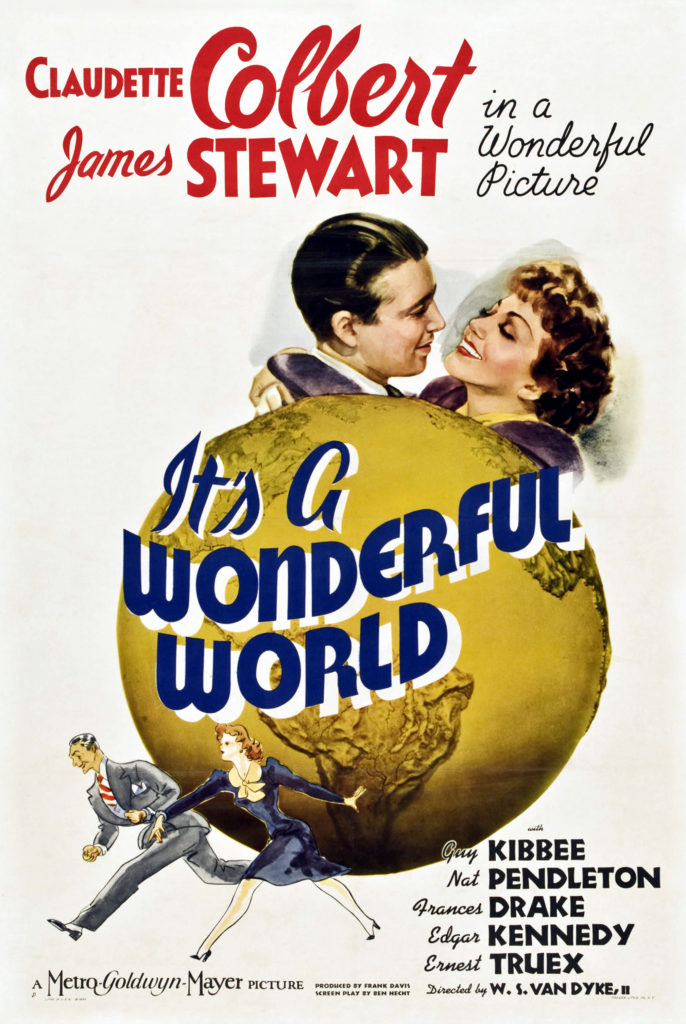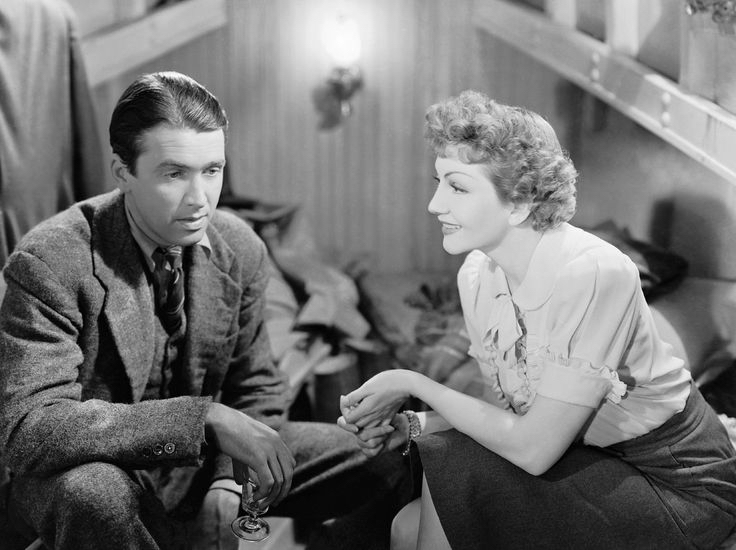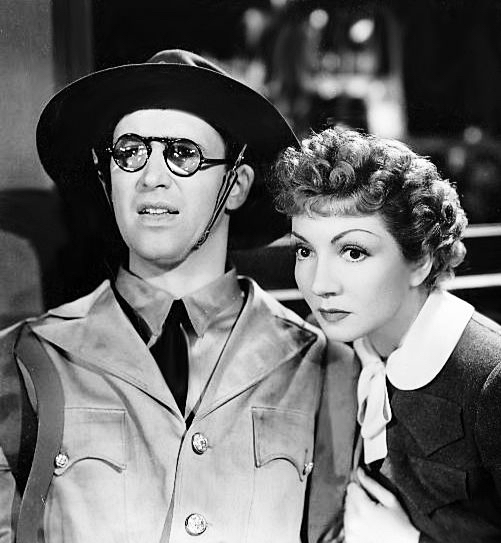Week of May 10 – 16, 2020
If you need to put yourself into a sunnier mood, there are few methods as effective as watching a “screwball” comedy. The combination of big stars, kooky antics and wild absurdities of this very particular subgenre of film comedy is irresistible when done properly. It’s a Wonderful World is a largely forgotten screwball comedy from 1939; it’s one of the unsung titles of that memorable year, and a prime inspiration for an article I wrote (Filmbobbery, Volume 5, Issue 4, Spring 2004) about such unsung movies.

In a year chock full of great and excellent films, It’s a Wonderful World is a very good one, well worth the time to watch. The premise has private detective Guy Johnson (James Stewart) taking on a thankless job, keeping watch over troublesome tycoon Willie Heyward (Ernest Truex) because it pays the bills. But someone has it in for Willie, framing him for murder, while Johnson is prosecuted for aiding and abetting. On the way to prison Johnson escapes from the dopey cops guarding him because he notices a clue in a newspaper that may exonerate Heyward and himself. But trouble lies ahead; Johnson’s escape is witnessed by poetess Edwina Corday (lovely Claudette Colbert), and Johnson chooses to force her along with him until he feels safe. In true screwball comedy fashion the reluctant captive turns the tables once she realizes the truth; she decides to help him, even when he doesn’t want her to, and she saves his bacon numerous times before the case is finally wrapped up.
If this sounds vaguely familiar, it’s because it is vaguely familiar. Five years after her huge hit It Happened One Night, Claudette Colbert once again takes to the road, reluctantly, trying to hide her identity while being accompanied by a man pretending to be someone else. Actually, several comedies of the 1930s share similar elements. This particular story, moreover, is written by Ben Hecht and Herman J. Mankiewicz, each of whom authored many classic comedies of the era. Direction is handled by W. S. Van Dyke II, who delivers the goods with gusto and impeccable timing.
The primary appeal, of course, is teaming jumpy, cynical James Stewart (who talks a mile a minute when he’s worked up) with — and against — eternal optimist Claudette Colbert. Watch ’em squabble and verbally joust with each other, knowing all the time that they are meant for each other. It’s a tried-and-true formula that works when the material is funny, and when the stars are committed to it. It certainly works here!

Like most romantic comedies, their relationship is rocky at first. Believing him to be a hardened criminal, Edwina lies to him and tries to escape, and to hand him over to the cops. Guy doesn’t take offense; he expects her to act like “a nitwit and a lunkhead” (Guy hasn’t known any smart, quality women in his sheltered life), and he is genuinely surprised when some of her ideas keep them safe and advance his case.
The case itself is complicated and overwrought, which heightens the stakes dramatically and allows for both suspense and comedy. The search for “Half a Dime” takes Guy and Edwina, plus Guy’s detective associate Cap Streeter (Guy Kibbee), the dopey pair of cops (Nat Pendleton and Edgar Kennedy), plus the killers, to a small theatre in Saugerties where the case finally comes to a head. But getting there is much of the fun, especially when Guy masquerades as a scout leader to avoid detection. His disguise really consists of the uniform and thick glasses, which utterly impair his eyesight (it’s a great sight gag).
I’ve always liked the film because of its cleverness. Hecht and Mankiewicz’s script is masterly, offering clues and red herrings along the way to solving Guy Johnson’s case, all the while building the central relationship, boosting the view that women are at least as smart as men, and cracking jokes along the way. It treats the cops as dumb, but in this case they are, even when the case unfolds right in front of them. Relax, it’s a comedy.

For me, the film’s biggest asset is Claudette Colbert. She’s always been one of my favorites of the ’30s, in films as disparate as I Cover the Waterfront (1933) and Cleopatra (1934). In 1939 alone, she excels and shines in this film, Midnight and Drums Along the Mohawk. Here, she’s a kooky poetess ready for adventure who outsmarts just about everybody, and even the mistakes Edwina makes somehow work in her favor by the end. As good as James Stewart is, Colbert is better, and the reason this movie works so well. This film isn’t quite as sunny as I would like for this particular category, but Colbert’s performance provides the buoyancy I am looking to promote.
Nevertheless, It’s a Wonderful World is a sprightly, fun movie that should offer you lots of laughs, especially if you have never seen it before. It has been long overshadowed by the other James Stewart movie with a similar title, but it has plenty of merit and rewards of its own. It is available on DVD through the Warner Archive, and shows up on TCM every once in a while. It’s definitely worth a peek; I swear by my eyes! ☆ ☆ ☆. Backdated to May 10, 2020.
Similar films include It Happened One Night (1934); Bringing Up Baby (1938); Midnight (1939); The Philadelphia Story (1940); The Lady Eve (1941) and The Palm Beach Story (1942).
